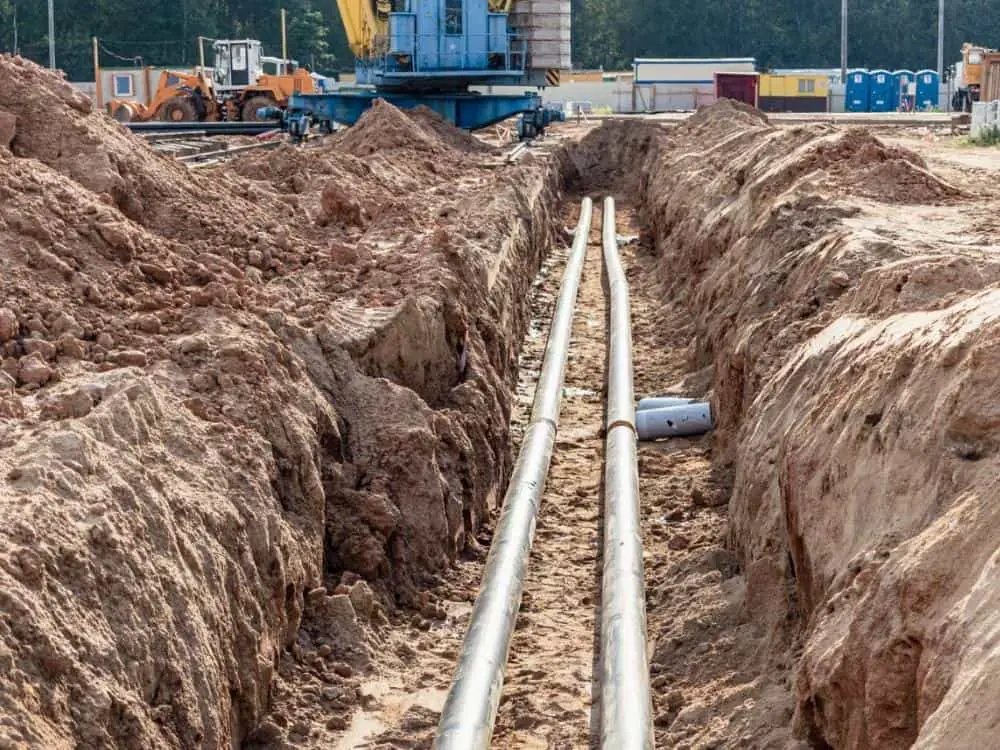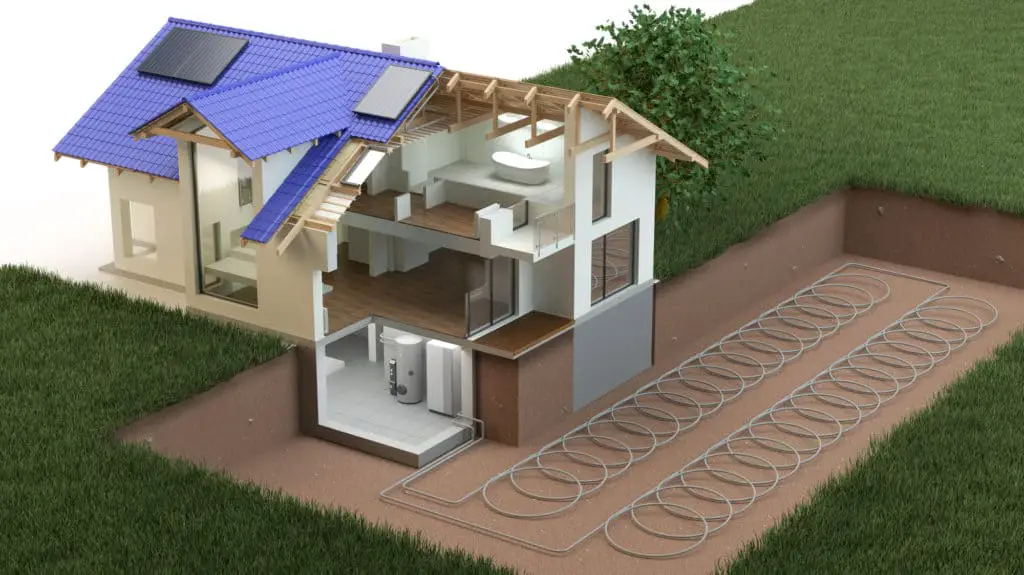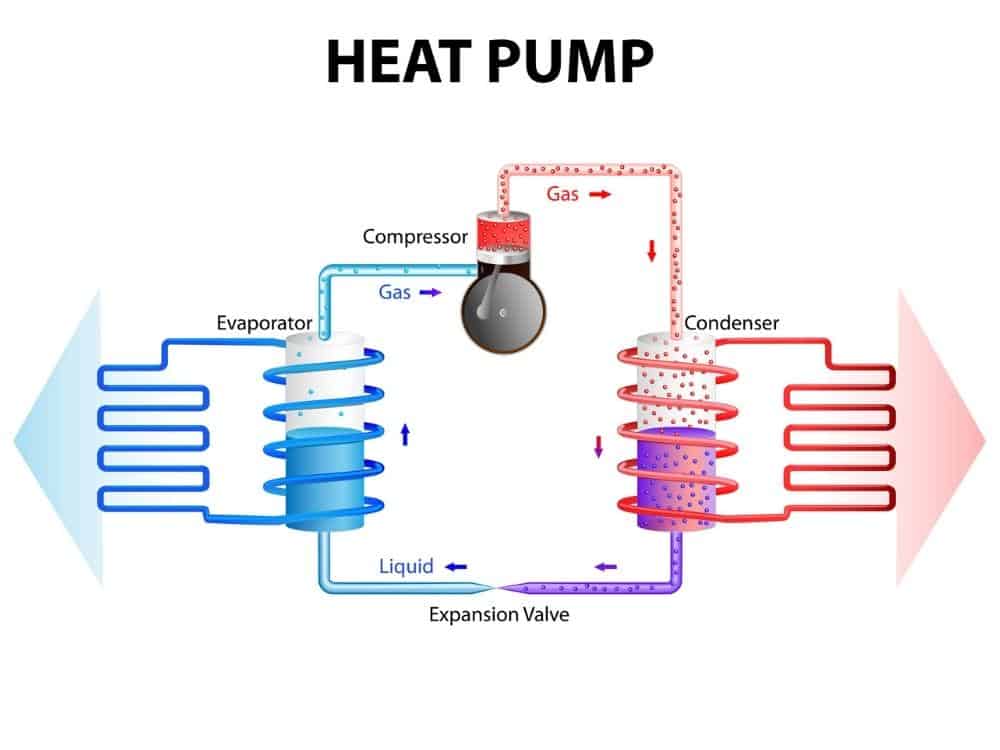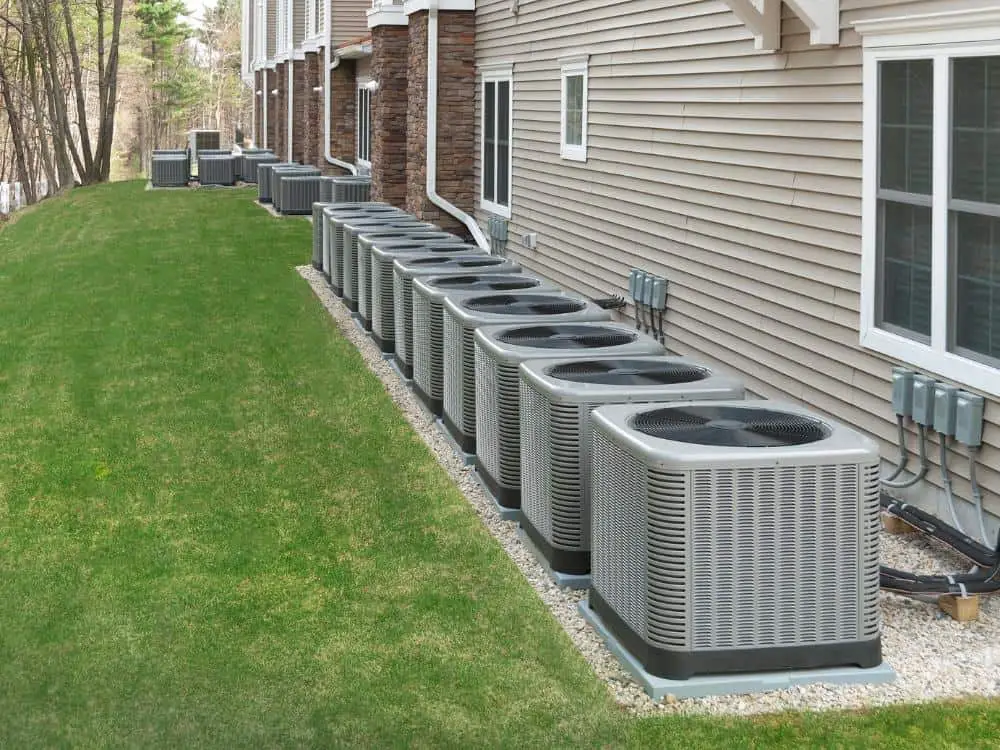The earth is filled with many energy sources, and one of them is geothermal energy. Have you ever wondered where all the natural hot springs or volcanic heat comes from? Due to the earth’s core being filled with molten rock, called magma, there is a lot of heat energy and power available for exploitation.
Geothermal energy is the heat energy extracted from inside the earth in the form of hot water or steam. Deep beneath the earth’s surface, beneath the earth’s crust, is where clean, renewable geothermal energy is mined to be utilized to generate electricity.
Here is all you need to know about geothermal energy:
- The definition of geothermal energy.
- Whether or not geothermal energy is renewable or nonrenewable.
- In what ways geothermal energy can be utilized.
- Creating more geothermal energy globally
- The pros and cons of geothermal energy.
- The reason why some places are successfully harvesting geothermal energy.
Let’s delve deeper into what geothermal energy is and how it is an excellent way for people to have energy independence.

What Is Geothermal Energy?
Simply stated, geothermal energy is the heat and power found from the middle of our planet, commonly known as the earth’s core. The temperature of the earth’s core is approximately 7200 degrees Fahrenheit.
When this heat in the earth’s center is utilized, it can produce large amounts of sustainable energy. The deeper the earth is mined, the hotter it gets. Therefore the heat found in the earth’s crust heats the water that has made its way into underground reservoirs.
When the water is sufficiently heated, it tends to burst to the earth’s surface as either hot water or steam. This is why hot water is seen blasting into the air as the hot water has found a way through the earth’s shifting tectonic plates.
Compared to the past, where geothermal energy could only be extracted from places where hot water was close to the earth’s surface, lately, more geothermal energy can be leveraged as engineers have developed several ways of producing power from geothermal wells.
The geothermal wells drilled deep into the earth’s core, just over 6 miles, can capture the hot water and steam that rises. There is 50 000 more energy in just over 6 miles of the earth’s crust than all the natural gas and oil resources found globally.
Is Geothermal Renewable Or Nonrenewable?
Geothermal energy is a clean, renewable source of energy. It can produce heat energy for as long as planet earth exists.
Geothermal energy is the largest, renewable, sustainable, clean energy that humans have in the world. With renewable energy use on the rise, geothermal energy is more important now than ever.
Geothermal energy is a renewable resource as it can naturally replenish itself using the earth’s heat. Because geothermal energy is renewable, it can help combat climate change and decrease pollution, which reduces threats to people’s health.
Although geothermal energy accounts for the minority of the earth’s energy supply, there is no doubt that it is growing at an accelerated rate. What makes geothermal energy a clean energy source is that it does not produce direct air pollutants.

What Ways Can Geothermal Energy Be Used?
The two ways geothermal energy can be used are through a heat pump system, and it can be used to create electricity.
Using Heat Pump Systems To Get Geothermal Energy In Homes.
The first way, heat pump systems, is where heat pumps use heat from the earth’s surface. There are varying depths of the earth’s layers, with four main ones providing different heat levels.
The very top layer of earth provides consistent heat of approximately 50-60 degrees Fahrenheit. This outer layer is where a geothermal heat pump works best for heating and cooling buildings. An air system and the heat exchanger are buried in the groundwork simultaneously to pump heat into a building.
Heat pumps generally work on the idea that it is easier to transfer something than make something. In this case, it’s easier to move the core’s heat than to create heat from scratch. However, how does a heat pump heat?
A heat pump pulls heat from the outside air into the home during the winter or fall. Surprisingly, a heat pump can pull enough heat from the outside air to heat homes to 70 degrees. It can typically do this when the outside air is above 30 degrees.
Furthermore, heat pumps can pull in cooler air during the summertime, which helps to save money as running traditional furnaces can be expensive.
Using Steam From The Earth’s Surface To Generate Electricity.
The heat energy extracted from the earth’s center in the form of steam plays a role in creating electricity. Electricity is made through power plants that turn steam into energy using turbines. The turbines start to spin as soon as the steam goes through the system.
The turning turbines, in turn, make power. Furthermore, power plants can use geothermal energy to make hot water. Cities can use this hot water to heat buildings.
There are mainly three geothermal power plant types.
- A flash steam power plant is geothermal technology created that features a pump that pushes high-pressure hot fluid from the earth into a tank at the earth’s surface. This is where the liquid cools. The liquid turns to vapor during the cooling process, driving the turbine to power a generator.
- Dry steam is extracted from a fracture in the earth’s surface. The steam is used to turn a turbine.
- A binary cycle power plant is where the hot water mined from the ground is passed by another fluid with a lower boiling point. This leads to vapor being created, which turns a turbine to generate electricity.
Interestingly, binary power plants seem to be the popular choice because they only need a medium temperature field. Therefore, they will likely be the most commonly used to make geothermal energy in the future.

How Can More Geothermal Energy Be Created Globally?
More geothermal energy can be created by simply recycling water waste from cities. Water waste is injected into the earth, and once it heats up, more geothermal energy can be made.
Although there is a ready and waiting supply of raw magma, it is often nearly impossible to have the technology required to capture the needed heat. Another technique, called an enhanced geothermal system, uses hot, dry rock, which is simpler and more successful.
Two wells must be drilled where there is hot, dry rock to generate more geothermal energy. Drilling can be done virtually all over the globe as there is an abundance of hot, dry rock below the ground.
The wells go below the ground to around 3 to 5 miles and are spaced two miles apart to successfully generate geothermal electricity. Under high-pressure, cold water is injected down one well, and extracted up the second well as hot water.
However, although hot, dry rocks are readily available globally, it is still hard to access the right rocks. The technique has been successful in places like California but is a work in progress in others.
Advances in geothermal technology will make this renewable energy more affordable, accessible, and efficient globally.
Advantages And Disadvantages Of Geothermal Energy.
There are several pros and cons to geothermal energy, as with any energy source discovered on earth.
Advantages Of Geothermal Energy.
Geothermal energy is environmentally friendly.
Geothermal energy is one of the environmentally friendly energy sources. There are no direct greenhouse gases released into the earth’s atmosphere as with other energy sources. The carbon footprint that geothermal energy leaves behind is small.
- It is unlikely that geothermal energy will become unsustainable.
Geothermal energy is likely to last billions of years. Think of how unlikely it is for the earth’s core to suddenly run out of magma.
- Geothermal energy is readily available and accessible.
The earth’s core provides a lot of energy anywhere globally, meaning that geothermal energy is readily available and reliable and not likely to run out soon. This stable resource remains constant as it is not dependent on the sun, unlike other energy sources like wind or solar.
- Geothermal energy is great for both heating and cooling systems.
Geothermal energy is great for cooling and heating. This saves around 30%-60% on heating and 25%-50% on cooling for families worldwide. By connecting a geothermal heat pump to a series of underground loop pipes, water can be pumped to provide year-round hot water.
Cool air is circulated in the traditional air duct system once the heat is radiated away into the earth loop system. The opposite happens in winter, where heat is extracted from the earth loop to provide warm air in homes.
- Fossil fuels are not used when utilizing geothermal energy.
No fuel is used when it comes to geothermal energy. After the heating system has been installed, no mining occurs and no transportation.
- Geothermal energy land requirements are minimal.
Large amounts of land are not required to obtain or utilize geothermal energy as only 10% of the land requirement is used. Once geothermal power stations are built, they cost fairly little to operate, meaning the prices of geothermal energy will stabilize over time.

Disadvantages Of Geothermal Energy
- There is a risk of greenhouse gas emissions when mining geothermal energy.
Although it is generally safe to extract heat energy, there is always the risk of emissions of greenhouse gasses below the earth’s surface rising to the surface and causing people harm. The gasses causing concern are hydrogen sulfide, methane, carbon dioxide, and ammonia.
- Surface instability is possible when mining geothermal energy.
There can be some surface instability caused during the extraction of heat energy. The construction of large geothermal power plants can trigger an earthquake as the drilling takes place between tectonic plates. Therefore, miners need to mine mindfully.
- Geothermal setup costs can be high.
Geothermal setup costs can be higher than other forms of energy. Seismic sensing and test well drilling also add to the setup costs as without ensuring that the earth is stable, there can be no drilling of wells
- Cooling and heating geothermal systems installation is expensive.
There are high upfront costs for systems like cooling and heating systems. Installing geothermal heat pumps in an average-sized home can cost anywhere from $10,000-$20,000.
- Geothermal sites research requires time and money.
A good geothermal site requires a lot of research. There needs to be confirmation testing before drilling takes place and other preliminary investigations to ensure the new geothermal power plant is ready to meet the desired target geothermal energy production.
- Geothermal energy cannot be produced at a large scale.
Geothermal energy cannot yet produce power on the same large scale as fossil fuels as it is not close to the surface in many countries.
- Logistics and distribution of geothermal energy can be costly.
The distribution costs of moving geothermal energy over a long distance can be staggering as wells cannot be drilled everywhere.
Why Are Some Places Successful At Using Geothermal Energy?
The shifting of tectonic plates allows heat from the earth’s mantle to make its way to the upper crust, ensuring that some areas can easily use the earth’s power and heat to solve their energy problems.
This is how places situated above fault lines, like Iceland, are more successful in using geothermal energy in their everyday lives. The heat is very close to the surface, making it easier for Iceland to easily tap into it.
In fact, they have 7 geothermal power stations, essentially having more power than they need. Iceland uses the flash steam method to tap into geothermal energy. Iceland has so much spare hot water that it can afford outdoor swimming pools.
However, globally geothermal energy only accounts for around 1 percent of total electricity capacity. Essentially, countries not situated above fault lines are less likely to easily tap into geothermal energy.
That is not something that is often a good thing due to tsunamis and earthquakes, but living above fault lines is beneficial when it comes to geothermal energy.
For geothermal energy to be adopted globally, new ways of mining geothermal energy in other countries not situated above fault lines need to be found to help the world move away from energy problems.
References
- https://www.power-technology.com/features/what-is-geothermal-energy/
- https://www.eia.gov/energyexplained/geothermal/use-of-geothermal-energy.php
- https://www.energysage.com/about-clean-energy/geothermal/pros-cons-geothermal-energy/
- https://www.eia.gov/energyexplained/geothermal/where-geothermal-energy-is-found.php




